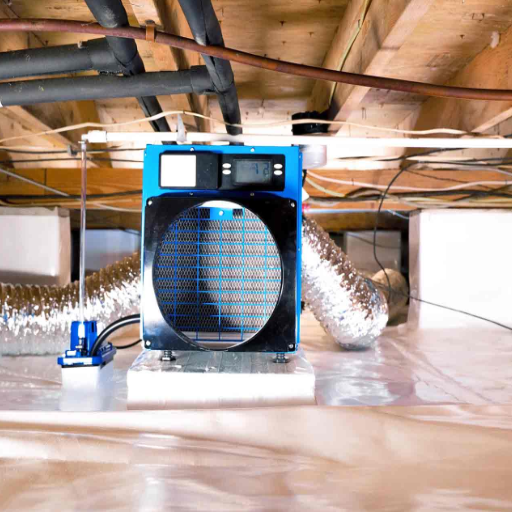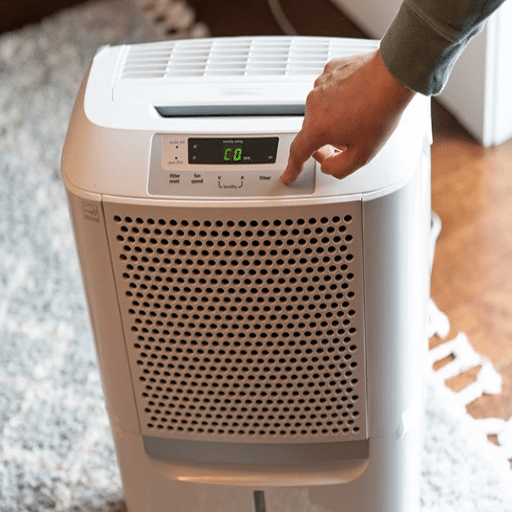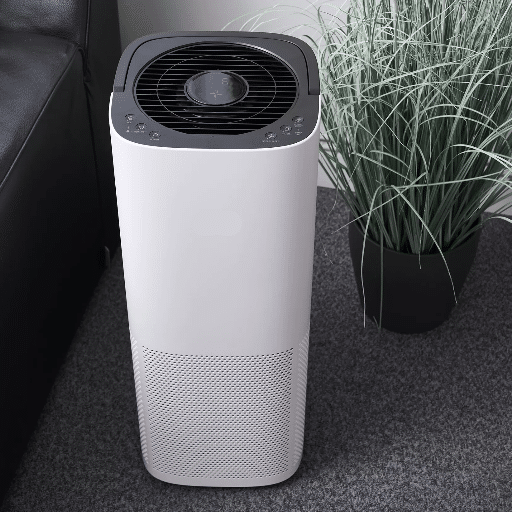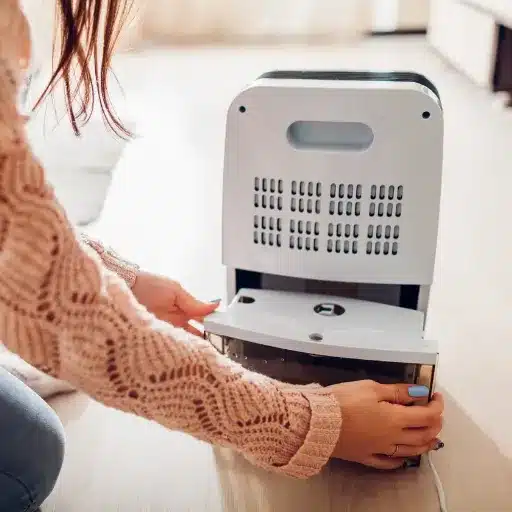Moisture problems in crawl spaces can lead to a host of issues, including mold growth, structural damage, and poor indoor air quality. One effective solution to combat excess humidity is investing in a crawl space dehumidifier. But how much does it cost to address this critical aspect of home maintenance? Whether you’re a homeowner looking to protect your property or a contractor seeking reliable information, understanding the factors that influence crawl space dehumidifier costs is essential. This guide will break down key considerations, from upfront expenses to long-term benefits, helping you make an informed decision that protects both your home and your wallet.
What is a crawl space dehumidifier, and why do you need one?
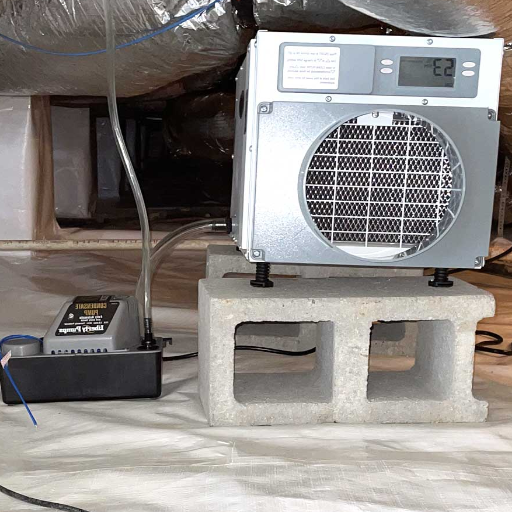
How does a crawl space dehumidifier work?
By removing moisture from the air in the crawl space, a crawl space dehumidifier manages humidity levels to a reasonable degree. It entails the suction of moist air, which is then passed over cooling coils contained within the dehumidifier. Moisture in the air is condensed into water, which is either collected or drained away through some means. The drier air that is returned to the crawl space dehumidifier is now uncontaminated, thus, balance is further achieved.
The components that make up a crawl space dehumidifier include an air intake fan and an exhaust fan, refrigeration coils, a compressor, and a drainage system. The pump draws in air, recharges it continuously, and the rest of the system goes to work: cooling the air, refrigerating it into liquid, collecting it in some storage uni,t and finally sending back uncontaminated air to the system. The expansion device allows differences in condensing gas to exist at any time in the system’s refrigeration cycle, granting it flexibility.
A crawl space dehumidifier helps to avert mold development, wood decay, and pest infestations, which are common problems in damp areas, by maintaining the humidity levels within optimal limits. It also aids in maintaining the condition of the flooring above the crawl space while reducing moisture, which increases the efficacy of HVAC systems. Minimizing spending and maximizing savings over time requires proper installation, sizing the unit appropriately for the space, routine maintenance, and set-it-and-forget-it style upkeep.
Benefits of using a crawl space dehumidifier
A well – installed crawl space dehumidifier mitigates harmful moisture accumulation, providing a healthier indoor air quality. It also prevents the growth of fungus like mold and mildew which can severely damage infrastructure and harm occupants. Mold can worsen respiratory ailments including asthma and allergies, which renders keeping moisture levels in check crucial for air quality and occupant health.
Furthermore, a dehumidifier protects joists, beams, and insulation among other parts of the house. High humidity can lead to wood warping, rotting or pest attack from termites and carpenter ants. Dew point control aids inhibit such destruction and thus preserves the home’s robustness and decreases possible expensive repair costs in the future.
A well managed HVAC system can achieve energy efficient goals with the help of a dehumidified crawl space. Heating and cooling units will have less strain imposed on them in context of low humidity levels, leading to lowered energy use. The increase in attributed life span of such units alongside the reduced cost of maintenance from this functional improvement qualifies these changes as steps towards environmentally sustainable home care.
Signs you need a dehumidifier in your crawl space
Pervasive dampness is a clear sign that your crawl space most likely needs a dehumidifier. Water stains and condensation on surfaces as well as an overall moist environment are examples of what high humidity may look like. The environment created by high moisture levels is ideal for mold and mildew to grow, which is dangerous for your home as well as the health of its occupants. The presence of musty smells or visible mold growth indicates that these are indeed the case.
The state of the wooden structures within your crawl space such as the support beams and floor joists is another thing to keep an eye on. The presence of warm air leads to shrinking, rotting and damage to the wood making the house unstable. If you notice weakened wood and discoloration alongside sagging floors, it is best to solve the initial problem by decreasing humidity levels with a dehumidifier.
In the end, higher utility expenses and unsatisfactory HVAC operation could signify too much moisture in your crawl space. Excess moisture in the air makes your HVAC system work overtime to keep the temperature pleasant within the house. Using a dehumidifier to control moisture level not only enhances the quality of air but also safeguards your home against substantial damage in the long run, preserving its foundational vitality and energy efficiency.
How much does a crawl space dehumidifier cost?
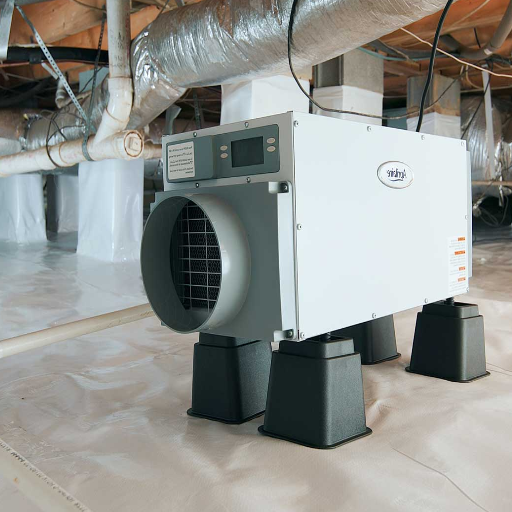
Factors affecting crawl space dehumidifier cost
- Unit Capacity and Size
The cost of a dehumidifier increases as the capacity, measured in pints of moisture removed over a day, increases, as it largely affects the price of the product. In regions with high humidity levels or greater square footage, there is often a need for larger or high-capacity units for the crawl space.
- Energy Efficiency
Dehumidifiers that are energy efficient are generally found to have a higher upfront cost as they come with certifications, but lower long-term operational costs due to reduced energy usage. According to some estimations, these models cost 15-30 percent more but reduce expenses on electricity in the long run.
- Installation Requirements
A customized installation that comes at an extra cost can impact the overall price. Installation fees tend to increase greatly if the crawl space requires preparatory work such as sealing or insulation. The complexity of the project determines how much the professional installation fee will cost. For most, the estimated price is around $500 to $1500.
- Built-in Features
Automatic draining systems, filter indicators, and advanced features such as digital controls tend to inflate the price. Enhanced models with remote access control and monitoring smart technology can set the price around $700 to $1200, which is a stark difference from the basic models.
- Brand and Warranty
Consideration is given to brand reputation as well as product warranty while determining price. Businesses that offer trusted brands usually have a higher markup because of their reliability, durabilty, and lower maintenance costs due to a reduced warranty period. In general, warranties are provided for some period between 1 and 5 years, some high-end units also provide extended coverage for a fee.
Average costs of different types of dehumidifiers for crawl spaces
The cost of a dehumidifier for crawl spaces varies based on factors such as size, capacity, energy efficiency, and additional features. These devices typically fall into three main categories:
- Small-Capacity Dehumidifiers: These retail for around $500 but are designed for smaller crawl spaces or regions with less moisture. Small capacity dehumidifiers usually require less than 30 pints of moisture on a per-day basis, 20-30 pints a day. These models also tend to be less energy efficient than their larger counterparts.
- Medium-Capacity Dehumidifiers: Medium-sized units range from $500 and can go as high as $900. These are meant for average-sized crawl spaces with moderate humidity. Medium capacity units can extract anywhere between 50-70 pints of moisture a day and are more likely to come with energy-saving options. Such savings features include programmable controls and automatic shut-off.
- High-Capacity Dehumidifiers: Severe moisture problems or large crawl spaces require high-capacity dehumidifiers which retail from $1,000 to 2,500. On a daily basis, these models remove anything over 90 pints of moisture and come with advanced features such as smart humidity sensors, Wi-Fi connectivity, and built-in drainage systems.
When picking a dehumidifier, the total price should be considered in conjunction with the initial price, including the cost of electricity and maintenance. While it may cost more to purchase an energy saving model at first, one will save a lot on utility costs further down the lines.
Comparing costs: crawl space dehumidifier vs. whole-house dehumidifier
Crawl space dehumidifiers usually range between $1,000 to $3,000, and whole-house dehumidifiers from $1,500 to $3,500.
|
Feature |
Crawl Space Unit |
Whole-House Unit |
|---|---|---|
|
Price |
$1,000–$3,000 |
$1,500–$3,500 |
|
Area |
Crawl space only |
Entire home |
|
Setup |
Simple, standalone |
Complex, HVAC-linked |
|
Purpose |
Foundation moisture |
Overall air quality |
|
Distribution |
Localized |
HVAC-integrated |
|
Ideal Use |
Damp crawl spaces |
Large, humid homes |
What are the cost factors of dehumidifier installation?
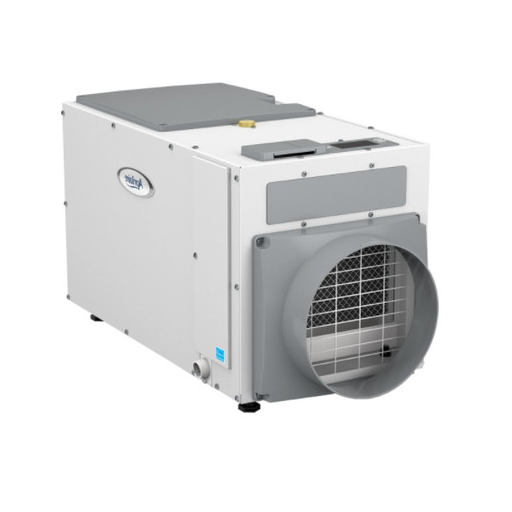
Understanding installation costs for dehumidifiers
Several key considerations affect the cost of installing a dehumidifier, and they differ based on the type of unit in question and the intricacy of the setup. These include:
- Type of Dehumidifier
Installation of crawl space units is less expensive due to their self-contained, unitary design and localized function. install Whole-house systems, however, need to be ‘married’ to the HVAC systems that already exist because of their comprehensive nature. This relationship drives use of additional labor, and therefore costs, because of the complex integration work that requires precise intertwining of many system components.
- Home Size and Layout
The use of more than one level in larger homes both creates space and calls for additional floor area. The presence of additional floor area serves as a partial justification for offering more complex solutions, especially about the installation of whole-house dehumidifiers. Such complexities may result in more ducts for the building, which can command greater costs for labor and materials.
- Electrical Modifications
Some dehumidifier systems come with a requirement where the unit has to be placed on a separate dedicated electrical circuit or upgraded wiring. The services of an electrician who is responsible for such alterations transforms the initial minimal price into additional expenses of the whole unit.
- Drainage and Ventilation Requirements
Like any other machine, a dehumidifier needs proper drainage and ventilation to function well. This means that placing or improving drainage offers, especially about outer units, imposes additional cost burdens
- Labor Costs
Labor costs differ greatly due to the location, skill level, and scope of work. A relatively simple task like setting up localized units can be accomplished easily, but complex installations for whole-house systems require skilled technicians which increases labor charges.
- Permit and Compliance Fees
Meeting local compliance codes or obtaining building permits may be necessary for certain systems, particularly for whole-house units that redesign HVAC systems and necessitate whole-house remodeling HVAC frameworks. These costs should be accounted for when planning.
Being aware of these cost factors can help make prudent purchasing decisions. To achieve optimum performance and efficiency, consulting HVAC professionals who evaluate homes and determine the best solutions is highly encouraged.
Professional vs. DIY dehumidifier installation
An absolute assessment of professional dehumidifier installation versus a do-it-yourself (DIY) approach is impacted by numerous considerations, including the unit type, level of complexity for installation, and the technical expertise of the user. Professional installation is highly recommended for whole-house dehumidifier systems, as they frequently require integration with pre-existing HVAC infrastructure. Such systems demand changes in ductwork, electrical wiring, and compliance with building codes for adequate safety and performance. Improper installation practices may lead to a myriad of issues, including efficiency problems, warranty invalidation, and even potential damage to the home HVAC system.
The installation of portable dehumidifiers or standalone units is more accessible for do-it-yourself. As previously mentioned, these units only require a basic placement and connection to the power source, as well as periodic maintenance like emptying the water tank or configuring a continuous drain. However, even portable units require proper placement, as poor placement may limit the performance of the unit; for instance, a unit situated in restricted spaces with limited airflow can become less effective at moisture removal.
Recent research shows that professionally-installed systems can offer up to 20-30% greater energy efficiency when compared with do-it-yourself systems that are poorly installed. In addition, professional installation usually comes with warranty and servicing options which is beneficial for long-term dependability. Homeowners are advised to assess their technical skills along with the size and intricacy of the dehumidifier system when selecting a system installation approach. Working with HVAC specialists guarantees that the system functions properly, within the bounds of safety and legal requirements, and without any issues regarding regulations.
The role of crawl space encapsulation in installation
When it comes to managing dehumidifier systems in high-humidity areas, the impact of crawl space encapsulation is often overlooked. Temperature, moisture, and air quality control are achieved by sealing the crawl space with insulation and vapor barriers. The efficiency of dehumidifiers is significantly improved, along with building structural integrity. Here are five benefits of this encapsulation during the construction:
- Moisture Control
In comparison to non-encapsulated crawl spaces, encapsulation reduces dehumidifier workload by restricting ground moisture infiltration ,which results in energy savings and improved efficiency.
- Improved Indoor Air Quality
Encapsulation reduces indoor air pollution by limiting mold and mildew growth, along with other particulates. Research indicates that lowering crawl space humidity can reduce indoor mold spore concentrations by as much as 60%.
- Enhanced Energy Efficiency
Encapsulated crawl space insulation improves thermal regulation, which lowers energy HVAC system expenditures.
- Structural Safeguarding
Crawl spaces tend to be more humid and can also be a location where moisture can condense to form water. This leads to the destruction of wood, leads to the limbs of electrical constructs rusting, and other organism invasions. Encapsulation greatly aids in alleviating these concerns, increasing the number of years the building’s foundational aspects survive.
- Regulatory Compliance and Modern Standards
Every modern day building has set guidelines to abide by. Most of these universal rules promote adding encapsulation to the basement’s overhead structure as it assists in reducing the water table levels in the area. Following this instruction during construction leads to fulfillment of modern-day norms and increases the worth of the property.
This makes crawl space encapsulation the most important technique to promote reliable, effective and safe dehumidifier installation while ensuring immediate and prolonged advantages to the user.
How to choose the right dehumidifier for your crawl spaces
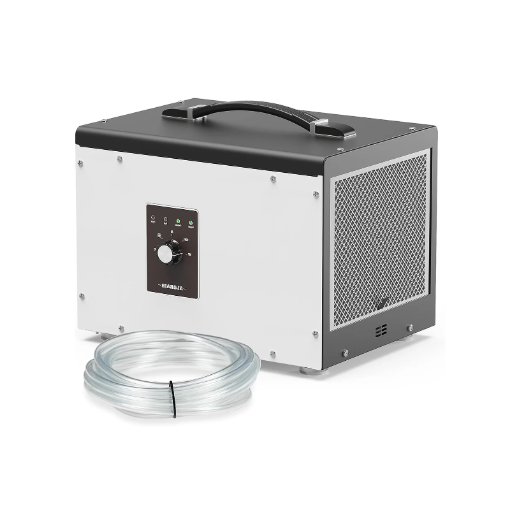
Key features to consider for dehumidifier selection
Top-performing crawl space dehumidifiers may have a longer lifespan and increased durability if specific features are assessed. Optimal performance per the surrounding environment is necessary, and the following are of utmost importance:
- Coverage Area and Capacity
Make sure the dehumidifier matches the size and moisture level of the crawl space. Units respond differently and range in capacity with smaller units handling roughly 30 pints per day while bigger units operate above 90 pints daily for high humidity areas. In preventing over sizing, energy waste is avoided alongside consistent dehumidification being ensured.
- Energy Consumption
Efficiency is regarded as a main feature on set units, and when selecting, consider the operating costs associated with the performance of the dehumidifier. These types of units concentrate on optimizing energy use and fulfill additional standards with modern parts like variable speed motors and smart humidity controls.
- Drainage Features
Drainage becomes essential with crawl spaces due to the constant need of moisture removal. Built in pumps and gravity based drainage units that reduce the need for manual interventions are more effective. For ease, models with direct hose connections to the outside drainage are common with users.
- Durability and Build Quality
Dehumidifiers meant for use in crawl space are more likely to be exposed to harsh environments – like dirt, mold, burst of high humidity or low temperatures. Therefore, they require a robust build including sealed circuitry, strong housing, and rust-resistant materials.
- Low-Temperature Operation
Dehumidifiers with auto defrost functions are particularly suited for use in crawl spaces as this region is prone to low temperatures in winter. Auto defrost functionalities make sure the coils do not freeze, aiding in prolongation of unit’s lifespan.
- Integrated Controls and Automation
Mobile applications, digital controls, advanced humidistats offer accurate measurement and control of humidity. Choose web enabled units with power outage automatic restart functions and programmable controls for quick, user friendly use.
- Noise Levels
Noise levels must be low or undetectable when the crawl space is near a living area. The lower the noise level, it is less disruptive. Hence, units should be equipped with sound levels below 55 decibels.
- Filter Maintenance and Air Quality Features
To improve the standard of living air in the crawl space, the dehumidifier unit needs to be equipped with reliable air filters. A great option is to use replaceable or washable filters. This would make upkeep effortless. Furthermore, advanced draft-free units come with microbial coatings or UV-C light technology to help prevent molds as well as bacteria.
Homeowners can evaluate these features to ensure that the chosen dehumidifier will be effective and dependable, particularly for the distinct conditions presented by crawl spaces.
Understanding coverage area and point capacity
Understanding the coverage area and pint capacity are important attributes that must be met for the dehumidifier to function effectively and efficiently. As with interval measurement, area coverage is are range that determines the optimal performance of the dehumidifier in square units of square. This, like many other technical details, is provided by manufacturers, so it is important to measure the total area of the crawl space and compare it to the intended output of the device, which is the coverage area. Without observing this fact, one is likely to face challenges associated with excess power consumption or inadequate moisture control.
In the case of crawl spaces, the associated area coverage tends to be significantly smaller when compared to the portable devices one tends to encounter. Therefore, ruling out the accurate measurement is highly detrimental, especially if one is planning to buy portable devices that span the entirety building that rely on power.
On the other hand, pint capacity refers to the amount of moisture that can be extracted from the air within a span of 24 hours.
Indeed, the perfect pint caps depends on the pint cap of the the crawl space in conjunction with the level of moisture issues presented. For example, a moderately humid smaller crawl space will only require a unit rated at 30-50 pints per day while severely large spaces with significant moisture problems may require a device that exceeds 70 pints.
Furthermore, evaluate other aspects, for example, the surroundings of the regional climate, how often water enters the area, and the airflow within the crawl space. These factors may require a higher-capacity unit, even if the square footage suggests otherwise. Homeowners, by evaluating the coverage area and appropriate point capacity within the context of the environment, can make prudent choices that enhance the effectiveness of their dehumidifier while safeguarding their spaces.
Energy efficiency and auto defrost options
Operating costs and environmental footprint are greatly impacted by the use of energy dehumidifiers consume, therefore, energy efficiency is important. Certified models are designed to operate with optimized energy usage, ensuring reduced energy consumption while addressing moisture control effectively. Through the certification, energy is starved while effectiveness is maintained at best in all quarters, therefore making them a prudent long-term choice.
ed with auto defrost functionality are essential, particularly in frost-susceptible areas. Fitted with auto defrost, dehumidifiers stop working when there is frost buildup on the unit’s coils for defrosting. Advanced modern units can optimize internal unit operation at colder temperatures while utilizing advanced sensors and computing technology to monitor internal sans external temperatures and thus defrost cycles in colder climates without automatic override.
The latest changes made in compressor technology as well as desiccant technology have increased energy efficiency, defrost on the other hand, would remain constant without changing the amount of wear on components while claiming that minimal component output performance would be muzzled. Through these changes, powerful, adaptable solutions for healthier environments are offered alongside the promise of reduced costs over time.
Are there ways to save on dehumidifier costs?
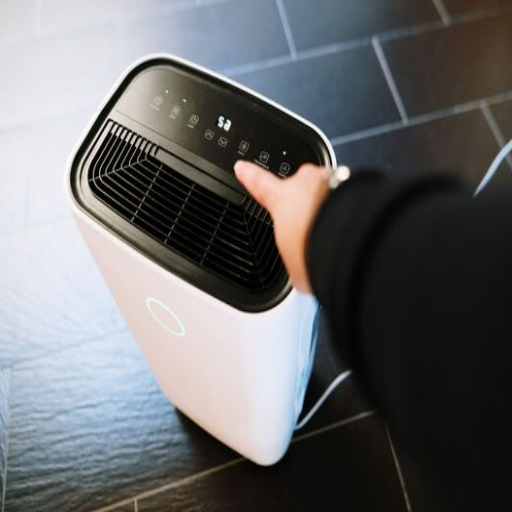
Tips for reducing the ongoing costs of dehumidifiers
Cost savings on maintenance for the dehumidifier are achieved through infrequent usage, useful maintenance, and planning. For example, air filters ought to be cleaned or replaced according to the manufacturer’s suggestions, which will boost the overall performance of the unit. This will ensure that the unit is not using more energy than is strictly required. This aim is achieved by reducing the strain put on the system as much as possible. Blockages and any other unforeseen disturbances in the intakes and drains should be checked regularly. The above measures serve a dual purpose of ensuring equipment longevity while improving cost efficiency.
Using the dehumidifier together with proper ventilation and effective insulation makes for a powerful combination. This is particularly useful when dealing with moist air because there is reduced moisture infiltration from windows, gaps, or cracks in doors, walls, and windows. During particular seasons, the unit can also be adjusted, which will lessen the burden placed on the dehumidifier. Use of models with built-in hygrometers is recommended as they can maintain the required humidity level without needing manual adjustments. It saves on energy and prevents over-dehumidification, which leads to increased consumption.
Finally, I strive to implement energy-efficient models along with smart scheduling techniques. For example, Energy Star-rated dehumidifiers have reduced energy expenditure without degrading productivity. I also utilize programmable clocks to operate the unit during low energy cost times, or at times of immediate demand such as post-shower periods or during humid afternoons. Through these combined methods, I can maximize the performance of my dehumidifier while minimizing the operational costs.
Energy-efficient models and their impact on costs
Like many appliances, the energy-efficient models of dehumidifiers take advantage of cutting-edge technology to create long-term savings by using far less electricity over time. Some of the modern features found in energy-efficient units include smart humidity control, variable-speed compressors, and many more, which allow these units to change their operation in response to current environmental conditions. These dehumidifiers are designed to conserve energy not just in operation but even during times of low demand, making them ideal, well-suited for regions where humidity levels change often and regularly. For instance, the newest energy-efficient compressor models, even during peak humidity periods, use a mere 15-30% less energy than older standard models, which leads to considerable savings on monthly utility bills for consumers.
Moreover, the operational cost of an energy-efficient dehumidifier will, with time, offset its initial purchase price. In the case of homeowners switching to Energy Star-certified dehumidifiers, the recent studies suggest savings of up to $200 in electricity expenses annually, contingent upon the size of the unit and the usage frequency. When combined with advanced scheduling through programmable timers, extra savings are possible. For instance, economic efficiency can be maximized by operating the device during off-peak energy hours or high-demand periods like post-rainfall and during months where humidity levels are on the rise.
The ecological consequences of energy conservation models remain a very important factor to consider. These models add less carbon pollution due to the advanced refrigerants that are used and the stringent measures for energy conservation put in place. This goal could easily integrate into bigger worldwide purposes of fighting climate change through the reduction of energy consumption on a domestic level. Upgrading to energy-saving household equipment is, therefore, a financially wise decision as much as it is a step taken towards maintaining the ecological balance. The developments in technologies of dehumidifiers make it possible for households to acquire better indoor air quality at no extra financial or ecological strain.
Maintenance practices to enhance the dehumidifier’s lifespan
The efficiency of a dehumidifier and its longevity can be greatly affected by routine maintenance, which includes, but is not limited to, maintaining and cleaning the air filter. The dust build up on the air filter needs to be regularly cleaned, as a blocked filter will reduce airflow. Depending on the usage, mesh cleaning can be done between two to four weeks and is complemented with replacement at the manufacturer’s suggested timelines.
For dehumidifier units with drainage systems, verify the unobstructed flow of drain hoses. The water collection bucket should be routinely emptied and cleaned as failure to tackle excess moisture will result in mold and bacterial growth which will have significant impact on air quality. For those with continuous drainage systems, blocked or loose drain hoses need to be checked. Mold and bacteria are very detrimental to overall air quality.
Maintaining and cleaning condenser coils is integral to making sure the dehumidifier runs in optimal condition and minimizes energy consumption. The condenser coils need to be surveyed and cleaned at least biannually. Mould is extremely harmful not only to the lungs, but to one’s health overall, and can be problematic when bound to condition systems requiring enhanced air filtration. Moulded coils can significantly lower the devices’ energy efficiency and build up wear and tear on the system over time. A soft brush or vacuum can be used to clean the coils without risking damage.
Another critical practice is the maintenance of effective working conditions. Dehumidifiers usually work best between 65°F and 86°F (18°C – 30°C). Operating outside this range will increase the risk of strain, overworking components, or freezing parts. For colder environments, units with auto-defrost systems to eliminate ice build-up on evaporator coils are strongly recommended.
Conducting regular check-ups of electrical systems and removing frayed cables, if any, is important to ensure that the unit remains safe and reliable. Following these practices for maintaining a dehumidifier will greatly reduce operational costs while improving performance and dehumidifier life expectancy.
References
Frequently Asked Questions (FAQ)
Q: What are the main factors that influence the cost of a crawl space dehumidifier?
A: The cost of a crawl space dehumidifier is influenced by several factors, including the unit’s capacity, features, brand, and whether it needs a condensate pump. Installation costs can also vary, especially if you need to install a whole-house dehumidifier within an existing HVAC system.
Q: Is it necessary to install a dehumidifier in a crawl space without encapsulation?
A: While it is possible to install a dehumidifier in a crawl space without encapsulation, it is generally more effective when combined with encapsulation. Encapsulation helps in reducing moisture ingress, and a dehumidifier can further improve air quality by effectively managing humidity levels.
Q: How does a basement dehumidifier differ from a crawl space dehumidifier?
A: A basement dehumidifier is typically designed for larger areas and may have higher capacities compared to a crawlspace dehumidifier, which is optimized for smaller, confined spaces. Depending on the size of your basement or crawl space, you might choose an energy star commercial dehumidifier for more efficiency.
Q: How does moisture removal improve air quality in a home?
A: Moisture removal by a dehumidifier helps to prevent mold growth, dust mites, and other allergens, thereby improving air quality. This is crucial for maintaining a healthy living environment, particularly in areas such as a crawl space or basement that are prone to dampness.
Q: What dehumidifier features should I look for in a crawl space dehumidifier?
A: Key features to consider include capacity (measured in pints of moisture removed per day), energy efficiency (Energy Star rating), ease of maintenance, a built-in condensate pump, and compatibility with smart home systems for remote monitoring and control.
Q: Can a commercial dehumidifier with a pump be used in residential settings?
A: Yes, a commercial dehumidifier with a pump can be used in residential settings, especially if you have a large basement or crawl space. These units are designed for high-capacity moisture removal and are suitable for spaces requiring robust dehumidifying solutions.
Q: What should I consider when choosing the best crawl space dehumidifier?
A: When selecting the best crawl space dehumidifier, consider the size of your crawlspace (measured in sq ft), the unit’s moisture removal capacity, energy efficiency, noise level, and whether you need additional features like a condensate pump or smart home integration.

